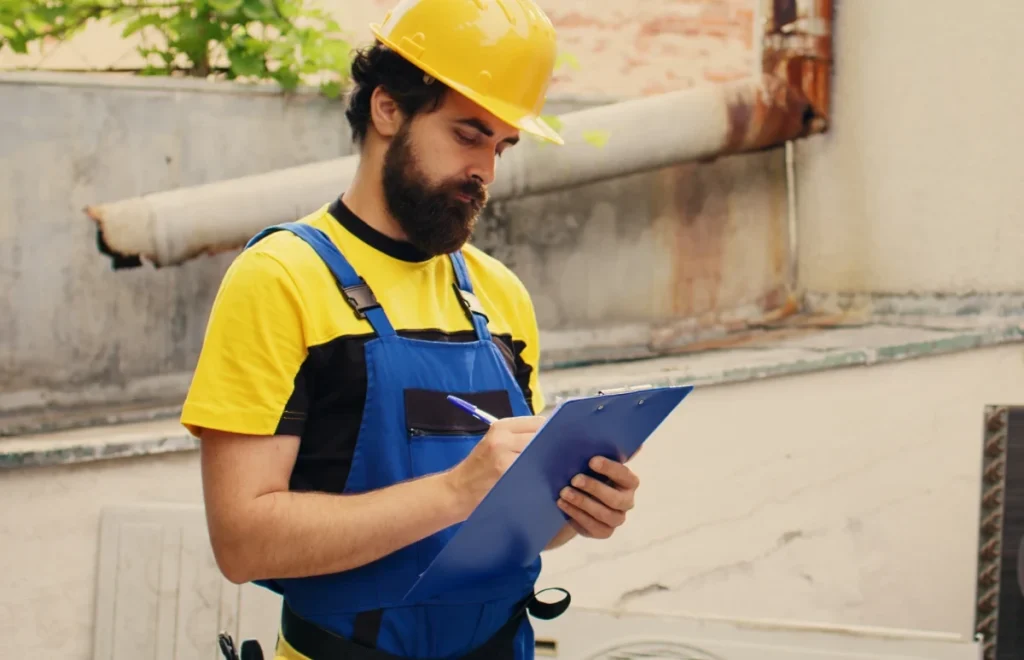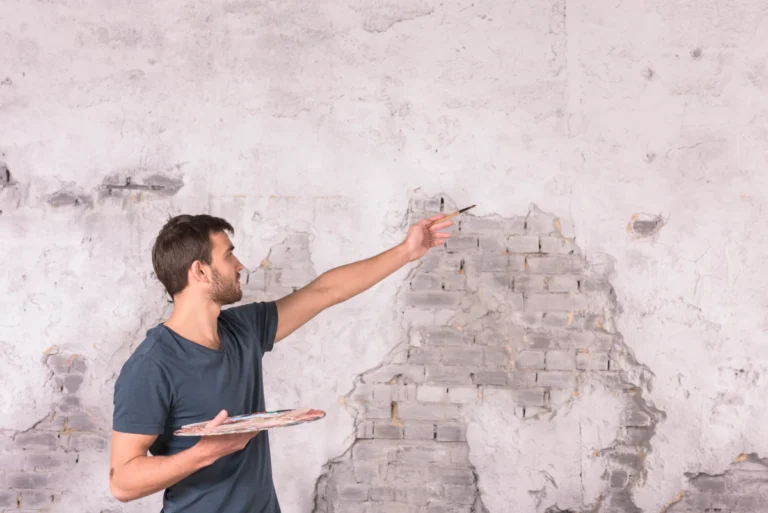In Barcelona, dampness can be a serious problem, both due to its impact on building structures and the negative consequences for the health of occupants. A professional damp inspection is essential to prevent major issues and detect potential leaks, mould, or structural damage in time.
In this detailed guide, we provide you with a complete damp inspection checklist, specially designed for homeowners and construction professionals in Barcelona.

1. Identification of Areas Prone to Dampness
The first step in any inspection is to identify the areas most vulnerable to dampness. These are typically zones with high exposure to water, such as:
- Basements and Garages: Due to their proximity to ground level, these spaces are more susceptible to dampness caused by water seeping from the ground or through side walls. Look for signs of rising damp or stains on the walls.
- Kitchens and Bathrooms: Water leaks or condensation are common in these areas due to continuous water use. Inspect faucets, sinks, showers, and bathtubs to ensure there are no leaks. It is also essential to check tiles and joints for possible seepage.
- Roofs and Terraces: Rainfall in Barcelona can be intense during certain months of the year, increasing the risk of leaks from poorly waterproofed roofs or terraces. Look for signs of dampness on ceilings, such as stains or peeling paint.
- Facades: Exterior walls, especially in old or poorly maintained buildings, can develop cracks that allow water to enter.
2. Detection of Visible Signs of Dampness
Once the critical areas have been identified, it is essential to carry out a visual inspection for signs of dampness. The most common indicators include:
- Dark Stains on Walls or Ceilings: Yellowish or brown stains are a clear sign that water is seeping in from somewhere.
- Mould Growth: Mould often appears in areas with high humidity and poor ventilation. It is not only unsightly but can also cause respiratory problems if not removed promptly. Pay close attention to the corners of rooms, behind furniture, and areas with poor air circulation.
- Condensation on Windows: Water accumulating on windows indicates excess humidity inside the home. Check whether this problem occurs regularly on the windows.
- Deteriorated Paint or Plaster: Peeling paint or damaged plaster on the walls is a sign that dampness is affecting the internal structure.
3. Ventilation Check
Proper ventilation is key to preventing moisture build-up. During the inspection, make sure that all rooms, especially those most exposed to water (bathrooms, kitchens, and basements), have adequate ventilation systems.
- Extractor Fans: In kitchens and bathrooms, check that extractor fans are working properly and are not blocked.
- Natural Ventilation: Open windows in all rooms and ensure there is good air circulation. Poorly ventilated rooms are a breeding ground for dampness and mould.
4. Assessment of Gutters and Drainage Systems
In many homes in Barcelona, gutters and downspouts are not properly maintained, which can lead to water accumulation on the roof or exterior walls.
- Gutter Cleaning: Ensure that gutters are clean and free of debris. A blocked gutter can cause water to pool and seep into the building.
- Downspouts: Check that downspouts direct rainwater away from the building’s foundations. If water accumulates near the base of the house, it can seep inside and cause moisture problems.
5. Inspection of Waterproofing Systems
Waterproofing is essential to protect structures against water infiltration. However, over time, these systems can deteriorate.
- Roof and Terrace Waterproofing: Look for signs of deterioration, such as cracks or fissures. If necessary, conduct water tests to check whether the waterproofing remains effective.
- Facades: Facades must be properly sealed. Inspect the joints between walls and windows, as well as any areas where construction materials meet, as these are common weak points for water infiltration.
6. Inspection of Pipes and Water Systems
Water leaks in pipes are one of the most common causes of moisture inside homes. During the inspection, check all visible pipes, paying particular attention to:
- Hot and Cold Water Pipes: Hot water pipes, in particular, can cause condensation if they are not well insulated, leading to moisture problems on surrounding walls.
- Hidden Systems: If you suspect leaks in hidden pipe systems, consider using leak detection equipment that doesn’t require opening the walls.
7. Assessment of the Ground and Foundations
Constant contact with the ground is one of the main sources of rising damp, especially in older buildings.
This type of moisture can slowly infiltrate through walls and cause significant structural damage.
- Rising Damp: Inspect walls near ground level for signs of moisture, such as stains, peeling paint, or deteriorated plaster.
- Exterior Ground Level: Ensure that the exterior ground level is not higher than the foundations of the house, as this facilitates water infiltration.
8. Measuring Humidity Levels
For an accurate diagnosis, it is advisable to use a moisture meter. These devices allow you to measure humidity levels in different areas of the home, even in places where no visible signs are present.
This way, you can detect potential problems early and take action before the situation worsens.
9. Prevention and Maintenance
Once the inspection is complete, it is important to take preventive measures to avoid recurring moisture problems.
- Crack Sealing: If you detect cracks on exterior walls, it is advisable to seal them to prevent water infiltration.
- Dehumidifiers: In areas with high ambient humidity, such as basements, consider installing dehumidifiers to keep moisture levels under control.
- Regular Maintenance: Perform periodic inspections of areas most prone to moisture, especially after periods of heavy rain or if the property has been closed for an extended period.
10. Professional Solutions for Damp Inspection

If, after the inspection, you detect damp problems, it is crucial to act as soon as possible to prevent further damage. Our company has highly qualified professionals ready to diagnose and resolve any moisture-related issues in your home.
Our team offers detailed inspections and will provide you with the best long-term solutions to protect your property.



